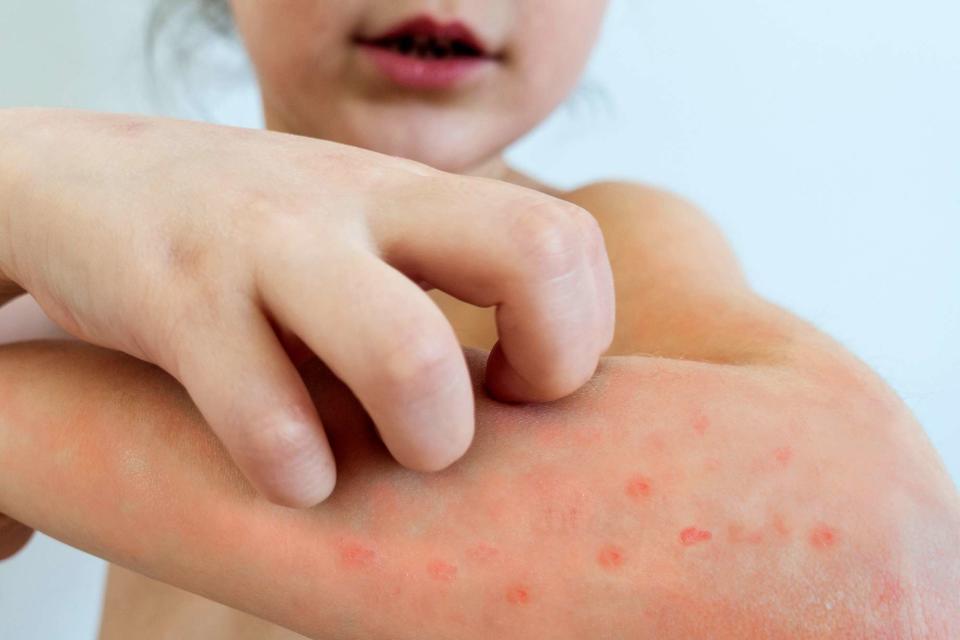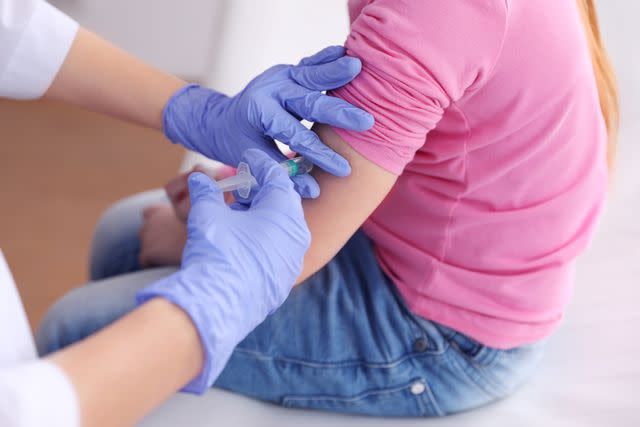Chicken Pox Cases Rise 200% Among Montana’s School-Aged Children
Last year, an infant and a young adult had to be hospitalized from the illness

Getty
Chicken pox are cases on the rise in MontanaCases of chicken pox are on the rise in Montana, with the state’s Department of Public Health and Human Services (DPHHS) reporting a 200% increase in cases among school-aged children for 2023.
And according to the DPHHS, at least half of those cases were transmitted from an adult family member who had shingles — a reactivation of the varicella virus, which causes chicken pox.
The DPHHS notes that while prior infection can protect someone from contracting the illness, “the best way to protect yourself and your child from chickenpox is vaccination,” says Jessica Lopeman, a registered nurse and epidemiologist with DPHHS.

Getty
The chicken pox vaccine has been administered since 1995.The CDC notes that the chicken pox vaccine is more than 90% effective at preventing the infection. The vaccine, which first became available in 1995, is a two-dose shot; The first dose is given from 12 months through 15 months old, with the second shot being administered between the ages of 4 and 6 years old.
The vaccine has prevented 91 million cases of chicken pox, as well as 238,000 hospitalizations, and 2,000 deaths, according to CDC estimates.
Related: Childhood Vaccinations in the U.S. Fall for the Second Year in a Row: 'This Is Alarming'
The illness caused by the virus usually lasts 4-7 days, and comes with the infamous itchy blisters, which range in severity; Some patients suffer up to 500 blisters on their body. The blisters can be accompanied by a fever, loss of appetite, and tiredness.
While generally healthy people don’t experience any complications from chicken pox, the CDC points out that it can have severe adverse effects in vulnerable members of the population, including infants, and anyone pregnant or with a weakened immune system (such as transplant recipients or people receiving chemotherapy).

Sasha_Suzi/Getty
Chicken pox often causes a high fever.Complications can include bacterial infections of the skin, pneumonia, swelling of the brain, and even sepsis. Last year in Montana, two people — an infant and a young adult — required hospitalization from chicken pox.
Considering that Montana’s surge in chicken pox diagnoses is largely related to exposure to shingles, the state is reminding everyone to get vaccinated — and take care to avoid transmitting shingles.
Never miss a story — sign up for PEOPLE's free daily newsletter to stay up-to-date on the best of what PEOPLE has to offer, from juicy celebrity news to compelling human interest stories.
“With the recent rise in cases related to shingles exposures, DPHHS is reminding parents and grandparents that shingles can cause chickenpox in unvaccinated persons who have not previously had the virus,” Lopeman said. “It’s important that children are up-to-date on vaccines, including the chickenpox vaccine, and if someone does develop shingles, keep the shingles rash covered to prevent exposure and transmission of the varicella virus.”
For more People news, make sure to sign up for our newsletter!
Read the original article on People.

